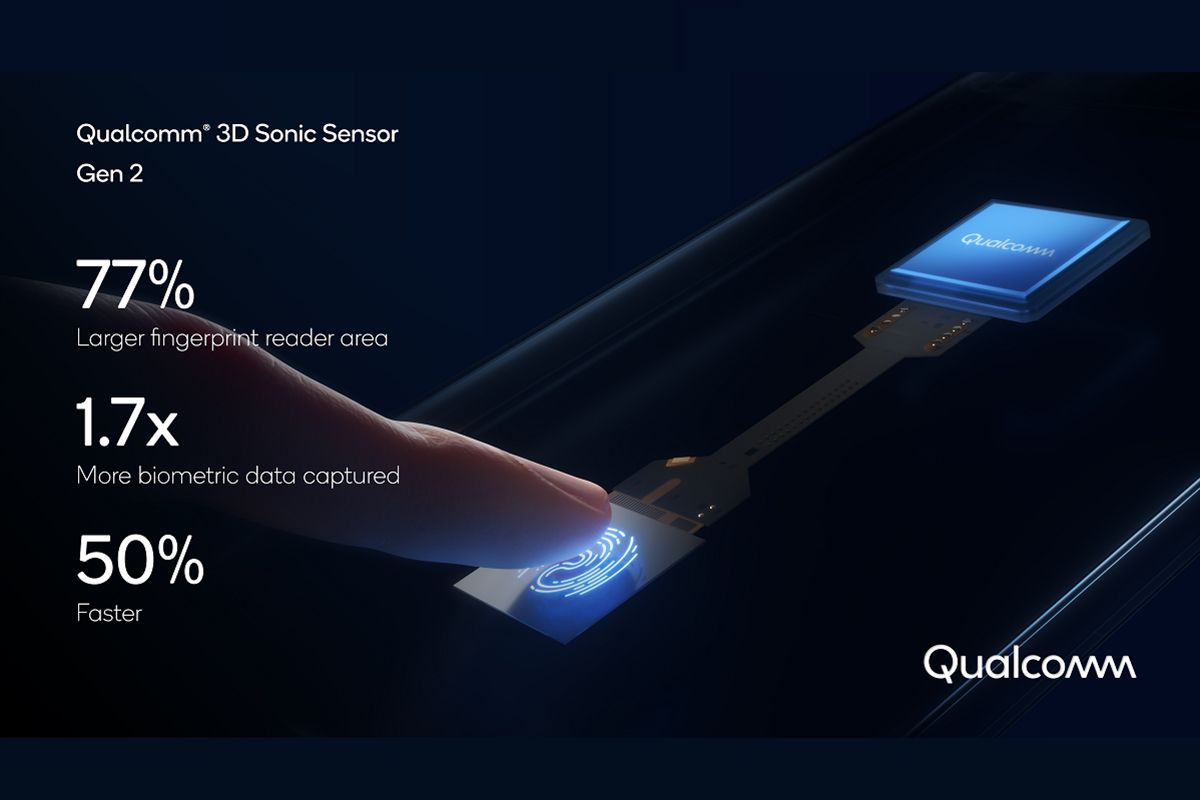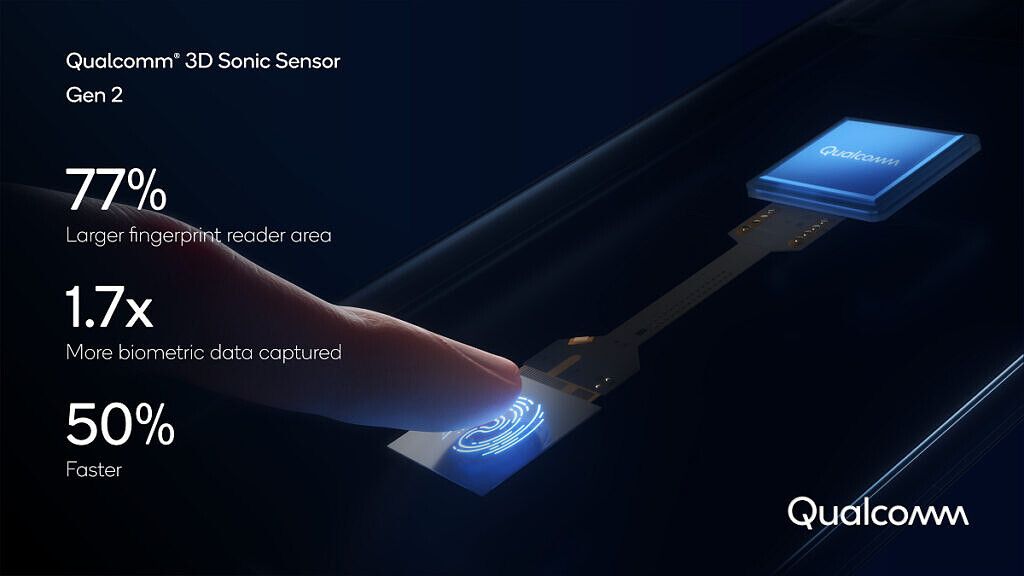With the launch of the Snapdragon 855 back in 2018, Qualcomm debuted the first-gen Qualcomm 3D Sonic Sensor. The under-display fingerprint sensor solution used ultrasonic waves for biometric authentication, making it more secure and accurate than optical sensors that use light for the same purpose. As a result, many flagship devices, like the Galaxy S10 series, Galaxy Note 10 series, Galaxy S20 series, and the Galaxy Note 20 series, used the 3D Sonic Sensor for biometric authentication. Today, Qualcomm has lifted the covers off of the second-gen 3D Sonic Sensor, which brings significant improvements over the previous model.
The new Qualcomm 3D Sonic Sensor Gen 2 will be available in new sizes that are 77% larger than the first generation and offer 50% faster performance. Thanks to the larger surface area, the second-gen sensor captures 1.7x more biometric data, making it more secure than its predecessor. Due to the larger surface area and faster processing speeds, the second-gen 3D Sonic Sensor will offer users a significantly better experience in upcoming devices.
While Qualcomm hasn't confirmed exactly which device will feature the new 3D Sonic Sensor Gen 2, the company has revealed that devices featuring the sensor will hit the market early this year. Since Samsung has used Qualcomm's 3D Sonic Sensor on its devices in the past, the company may include the second-gen sensor on its upcoming Galaxy S21 lineup.
It's worth noting that the 3D Sonic Sensor Gen 2 isn't the largest ultrasonic fingerprint sensor from the American chipmaker. That title is reserved for the 3D Sonic Max sensor, which was showcased alongside the Snapdragon 865 at the Snapdragon Tech Summit 2019. The sensor offers a recognition area 17x larger than the first-gen 3D Sonic Sensor, making it much larger than the new second-gen variant. Sadly, the 3D Sonic Max sensor is yet to make an appearance on a commercial product.


